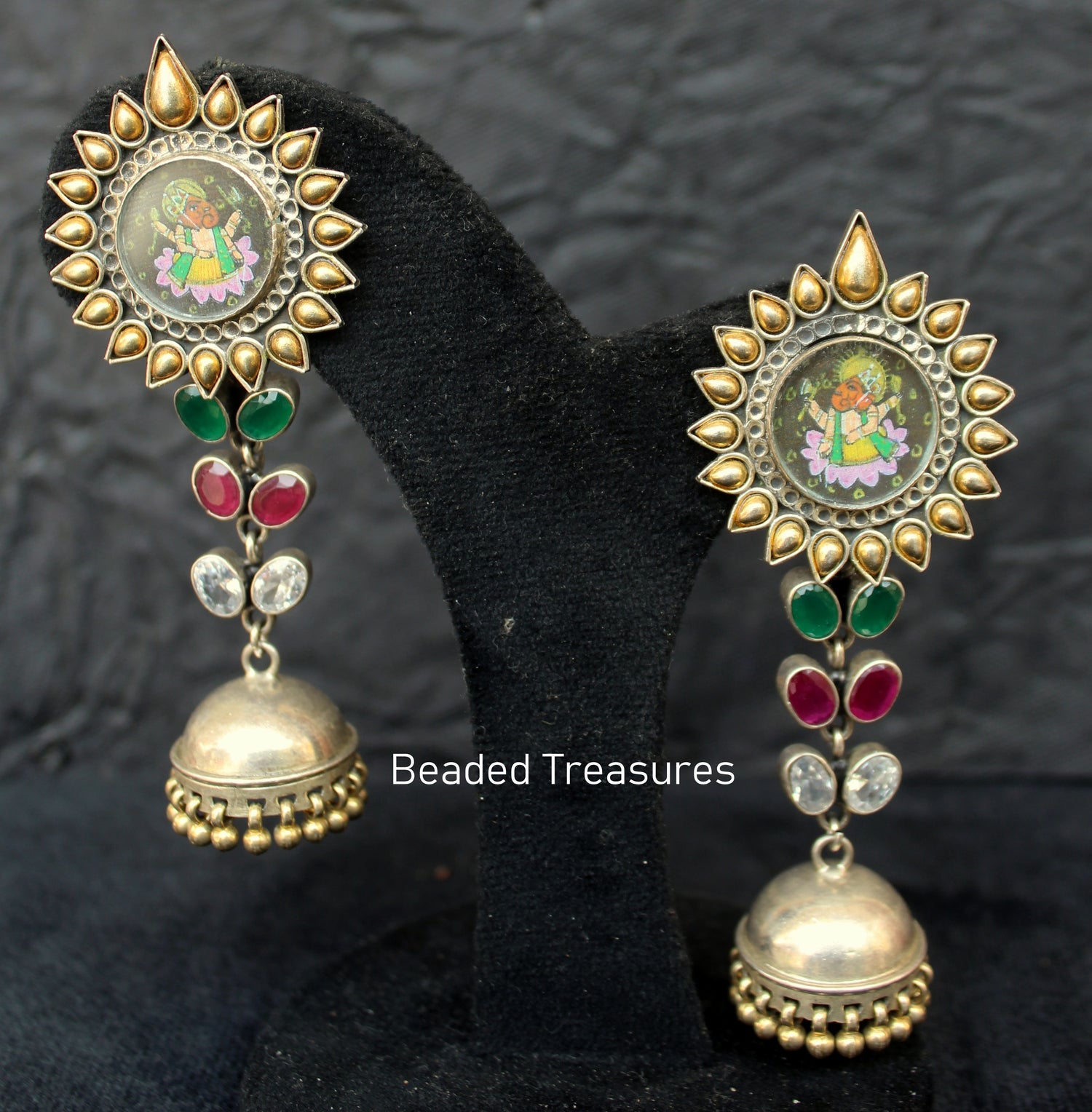Difference Between Kundan, Polki, and Meenakari Jewelry – Explained Simply
The world of Indian jewelry is rich with intricate craftsmanship and captivating styles, often featuring techniques passed down through generations. Among the most admired and sought-after forms are Kundan, Polki, and Meenakari. Although all three are part of Indian heritage and commonly beautify brides and holiday celebrants, each is a different art form with its own materials, processes, and visual attributes. Knowing the essential distinctions between Kundan, Polki, and Meenakari jewelry will not only make you appreciate these magnificent crafts even more but also help you make informed decisions when adding these treasures to your own collection. Let's de-mystify these three lovely jewelry designs.
Kundan: The Art of Setting Uncut Gemstones in Gold Foil
Technique: Kundan is the ancient Indian technique of jewelry making where uncut gemstones, mainly diamonds (referred to as "lakh"), are set into geometric patterns of pure gold foil. The technique is precise, with expert craftsmen positioning every gemstone and fastening it with fine strips of highly purified gold. The reverse side of a Kundan artifact is also enameled with striking colors, referred to as Meenakari, providing yet another dimension of art and worth.
Key Features:
Uncut Gemstones: The hallmark feature of Kundan is that natural, uncut gemstones are used, which maintain their raw, natural beauty.
Gold Foil Setting: The stones are secured in place with thin gold foil, molded and shaped around them, making for a secure and aesthetically pleasing setting.
Elaborate Designs: Kundan jewelry may include intricate and traditional Indian motifs, such as floral patterns, geometric forms, and representations of deities.
Weight: Because of the presence of pure gold foil and often heavy gemstones, Kundan items tend to have considerable weight.
Normally Accompanied by Meenakari: The back of the Kundan jewelry often features lovely Meenakari work.
Appearance: Kundan jewelry has a traditional and majestic aura. The uncut gemstones provide an exceptional shine and texture, while the ornate gold work gives it an air of luxury. The Meenakari on the back in colourful shades can also be turned around for a different appearance.
Polki: Highlighting the Natural Shine of Uncut Diamonds
Technique: Polki is a form of Kundan jewelry, but with a particular emphasis on the use of uncut diamonds. The diamonds are not polished or faceted like brilliant-cut diamonds but are left in their original, natural shape and lustre. Polki jewelry also includes embedding such uncut diamonds in gold foil, usually backed with enamel work.
Key Features:
Uncut Diamonds: The biggest difference of Polki is that only natural, uncut diamonds are used. These diamonds can be irregular in shape, size, and clarity.
Natural Brilliance: Polki diamonds have a subtle, natural brilliance unlike the sharp glint of cut diamonds. They also have an earthy, natural touch.
Gold Foil Setting: Like Kundan, Polki diamonds are mounted in complex gold foil patterns.
Classic Designs: Polki jewelry typically incorporates traditional Indian designs and is greatly prized for its heritage and craftsmanship.
More Valuable: Since it incorporates diamonds, Polki jewelry tends to be considered more valuable than Kundan jewelry that incorporates other gemstones.
Look: Polki jewelry has a classic beauty and a unique sparkle from the uncut diamonds. The natural differences in the diamonds provide character and individuality to each item.
Meenakari: The Radiant Art of Enameling
Technique: Meenakari is a Persian technique used in art form, which entails colouring or embellishing the surface of metals by melting mineral substances upon them. In jewelry, Meenakari is commonly employed to achieve elaborate and colourful designs on the reverse (and occasionally on the front side as well) of Kundan and Polki designs, and independently as independent jewelry. The craft process is one of engraving or etching patterns on the metal surface and filling the recesses with enamels of different colours, which are fired at high temperatures to melt them onto the metal.
Key Features:
Enamel Work: The most distinguishing feature of Meenakari is the employment of rich enamels in many colours.
Intricate Patterns: The patterns of Meenakari may include floral patterns, birds, animals, and geometric designs with unbelievable detail and artistry.
Used as Both a Supporting and a Main Method: Meenakari is frequently used on the back of Kundan and Polki jewelry, enhancing beauty and worth. It is also separately applied to produce striking enamel jewelry.
Range of Metals: Though usually done on gold, Meenakari can even be performed on silver and other metals.
Vibrant and Ornate: Meenakari jewelry is famous for its colors and ornamentation.
Appearance: Meenakari jewelry is distinguished by their rich hues, delicate details, and sometimes whimsical motifs. It brings a lively and artistic touch to any design.
Pro Tip: How to Recognize Original Kundan, Polki, and Meenakari:
Kundan: Check the fine gold foil work around every gemstone. The setting must look smooth and secure.
Polki: Inspect the stones well. Original Polki diamonds will have an organic, uncut look with their own distinctive features.
Meenakari: Look for well-smoothed, vivid enamel colours that are sealed onto the metal surface. The borders of the designs must be distinct and defined.
Conclusion: Enjoying the Craftsmanship
Kundan, Polki, and Meenakari jewelry are not merely ornaments; they areTestamentsto India's rich heritage and superb craftsmanship. By learning about the special techniques and styles of each, you can better appreciate the craftsmanship that goes into them and make wise decisions when choosing these ageless designs for your own collection. Whether you like the imperial elegance of Kundan, the organic radiance of Polki, or the colorful creativity of Meenakari, every style is a unique means of honoring beauty and heritage.

